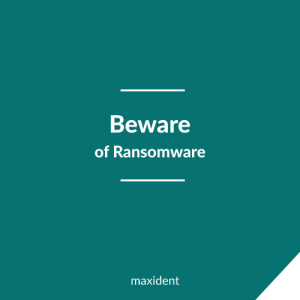
What is Ransomware?
Malware comes in many different forms, some of which we have already discussed, but there is a new type of malware on the rise. Worse than spyware or even scareware, this is ransomware. And just like the previous two, the name says it all. Ransomware is malicious software downloaded to your computer that encrypts your files and holds them for ransom, demanding a certain amount of money, or surveys to be completed. The point of this post is to help you to defend yourself against this new form of malware software by arming you with the most effective weapon—information.
Where to look for it
Email
Email in the form of spam can come to your inbox, informing you that you performed an illegal action or that you need a certain antivirus software. Usually, the files will come in the form of word files, PDF files, zip files or excel files.
Websites
Malicious websites, suspicious websites, and even legitimate websites can be compromised by ransomware.
Popup Advertisements
Just like scareware, ransomware popup ads are created to scare you into clicking on them in order to visit an infected website.
What it does
A ransomware attack can result in a potential loss of data, identity theft, and even extortion. When hackers take control of your computer and your files, they also have access to personal and sensitive information. Knowing this, they put pressure on their victims by using dirty tactics, such as—causing pornographic ads to pop up when you are attempting to click on a website and putting on a deadline or a time limit with consequences of either destroying the files or increasing the ransom amount. Sometimes, the message will bear the logo of a legitimate government agency or police force and will then accuse you of illegal activity.
What you do
Practicing vigilance whenever you are browsing the internet, checking email or even text messages is key to protecting yourself against threats like ransomware. It is essential to the security of yours and your patients’ information that you never click on links, open attachments, or open email from strangers or institutions you do not do business with; however, if this is an institution you do conduct business with, call them directly. Never call the number provided on the email, text message or popup.
Websites such as Microsoft and Norton also suggest that you use reputable antivirus software and firewalls (choose those ones that best suits the needs of your computer), back up as often as possible (it is always better to back up in a safe and secure location), and enable your popup blocker to avoid popups that could become potential doorways to those ransomware threats. Also update your software regularly. Software that is not updated can be manipulated by hackers.
In case of emergency
Now that you have your prevention kit in place, and you’re being cautious, keeping an eye on spam in your email and deleting all possible threats, what happens if you are still under attack? Remember, some legitimate websites may be compromised. I’m not saying an attack will occur, but if it does, here are some tips from the experts to keep you safe just in case of emergency:
Disconnect from the internet immediately—personal data cannot be transmitted to the hackers if you are not online.
Reinstall software. If you are not comfortable doing this yourself or if you are unable to, take your computer to a reputable source.
Do not pay the ransom! This will only give the hacker the impression that you are easily extorted, and more than likely, they will not release your files.
Contact authorities.
For more detailed information on ransomware, feel free to visit these two websites:
https://www.microsoft.com/security/portal/mmpc/shared/ransomware.aspx
http://ca.norton.com/yoursecurityresource/detail.jsp?aid=rise_in_ransomware
Suggested Page:



